#guácharo
Text
Round 1, Poll 2
Rook vs Oilbird


sources under cut
Rook Propaganda
"I feel like no one ever talks about them, even though they are common. They may look menacingly (which is a good thing for me), but they are intelligent and social and I love their distinctive two-color beaks. They just look so cool and serious."
"Collective nouns for rooks include building, parliament, clamour and storytelling. Their colonial nesting behaviour gave rise to the term rookery." This is wild to me, considering the fact that I learned 'rookery' as a term for herons, cormorants, and other waterbirds. Rook are highly gregarious, and will always nest colonially.
Oilbird Propaganda
"only flying nocturnal fruit eating bird in world! weird looking! they echolocate!"
The previous point really sums them up! Also known locally as guácharo; other than the kakapo, they are the world's only nocturnal, fruit-eating bird. They use their eyesight to find fruit, but navigate otherwise by echolocation.
"The Guácharo Cave was Venezuela's first national monument and is the centerpiece of a national park; according to some estimates there may be 15,000 or more birds living there. Colombia also has a national park named after its "Cueva de los Guácharos", near the southern border with Ecuador."
Image Sources: Rook (Anonymous); Oilbird (Óscar Meneses)
31 notes
·
View notes
Text
Behold... Oilbird (Steatornis caripensis)

4 notes
·
View notes
Text





the oilbird, also known as the guácharo, is a member of the nightjar family found in northern portions of south america. they are named for the unfortunate fact that previously, chicks were boiled down to create oil. oilbirds are unique in that they are the only nocturnal, flighted fruit-eating bird (the kākāpō is fruit eating and nocturnal, but flightless). they are skilled in flight, with tiny feet useless for anything other than clinging to vertical surfaces. they are one of the only birds capable of echolocation.
5K notes
·
View notes
Text
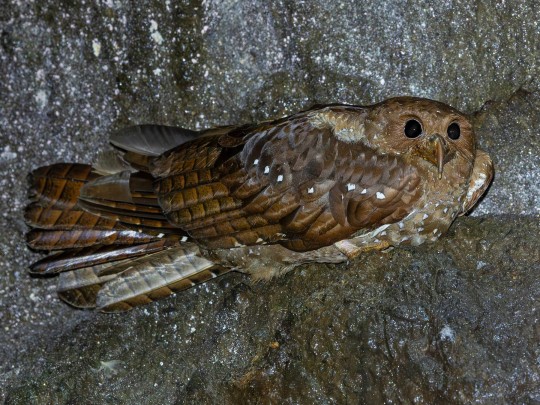
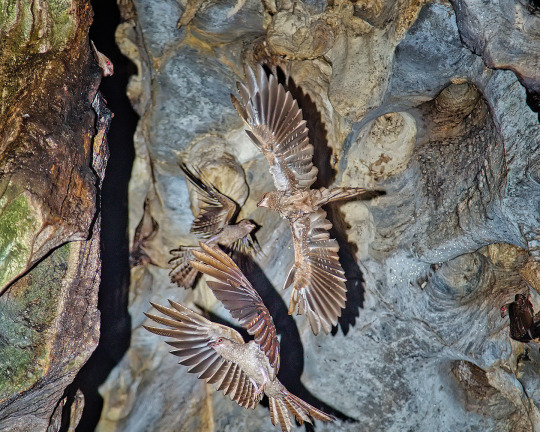

Oilbirds or Guácharos (Steatornis caripensis), family Steatornithidae, order Steatornithiformes, found in locations on northern and western South America
These birds used to be included in the order Caprimulgiformes, along with the nightjars, but were separated into their own order in 2010.
They are closely related to the nightjars.
These nocturnal birds usually nest in colonies in caves.
Oilbirds feed on the fruits of oil palms and laurels.
They are able to navigate at night using echo-location.
photographs by Sebastian Pourier, Christopher Anderson, Ben Lucking
#oilbird#steatornis#steatornithidae#steatornithiformes#bird#ornithology#animals#nature#south america
1K notes
·
View notes
Text



Ode to the Oilbird
The oilbird (Steatornis caripensis), also known as the guácharo, is a species of bird found throughout northeast South America, from Guyana to Bolivia. They are found primarily in montane and semi-montane habitats, which contain both caves and fruiting trees for them to roost in and feed on. The oilbird is named for its young, which are quite fat and traditionally collected by indigenous people for cooking.
The oilbird is quite bat-like in its behaviour. During the day, they roost in nests constructed of faecal matter and regurgitated seeds along the walls of deep caves. At night they emerge to feed on fruits, primarily avocados, laurels, and palms. Like bats, they use echolocation, emitting a series of high-pitched screeches as well as a highly developed sense of smell to find food. However, these calls are below 20 hertz, and therefore audible to humans Because of their nocturnal activity, their primary predators are owls. Snakes are also known to predate upon eggs and hatchlings.
S. caripensis is a monogamous species. Between April and May, males and females seek each other out by circling each other during flight and emitting a series of mating calls. Afterwards, the pair spends most of its time together constructing a nest and foraging. Females lay 2-4 eggs, which both parents spend 30 to 35 days incubating. Afterwards, the hatchlings are intensively taken care of for up to 125 days, at which point they fledge and leave the nest.
Oilbirds are fairly large, with a body length of 40–49 cm (16–19 in), and weighing 350–475 g (12.3–16.8 oz), with a wing span of aboutn95 cm (37 in). They have rich brown plumage, speckled with white, and a flat head with a hooked beak. Compared to other birds, the feet and eyes are fairly small, but the pupils are relatively large to allow for greater night vision.
Conservation status: The IUCN has classified the oilbird as Least Concern. Guácharo Cave, which is home to at least 15,000 birds, is protected by the Venezuelan government, and the several more caves are protected in other countries' national parks.
Want to request some art or uncharismatic facts? Just send me proof of donation to any of the fundraisers on this list, or a Palestinian organization of your choice! Proof does not have to include any personal info– only the date, the amount, and the recipient.
Photos
Greg Homel
Will Sweet
Roger Alham
#oilbird#Steatornithiformes#Steatornithidae#birds#caves#cave birds#tropical forests#tropical forest birds#south america#northern south america#western south america#animal facts#biology#zoology#ecology
203 notes
·
View notes
Text


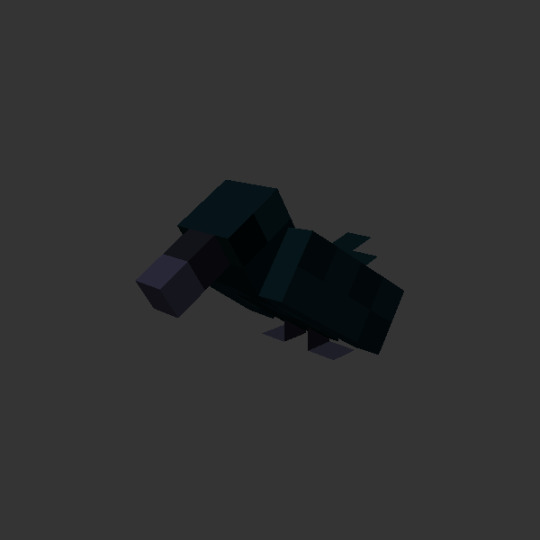


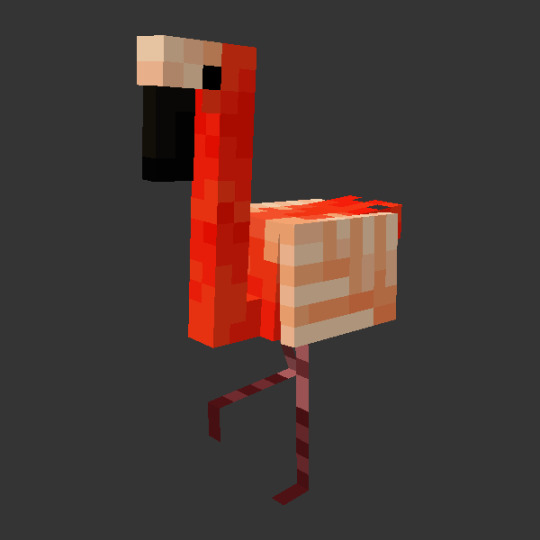



The albatross, crane, and the crow's models are all done.
The vulture, the toucan, and the flamingo, as well.
Now, the hoardgull, pelican, and songbird models are finished.
These are all for my mod, Valley of Plenty! Though it's kinda an art project too, I really like modeling birds. I have a tag for the mod, everything I've posted is under that tag (on this post too!), and I'm doing an AMA right now for it, but...
Similar to the last poll, which bird(s) should I model next?
274 notes
·
View notes
Text
Weird Birds
all birds are weird cause they're reptiles but here are especially weird birds

Hooded Pitohui - Pitohui dichrous LC
poisonous bird, scientist confirmed if you touch it then touch your fingers to your mouth it makes your mouth numb, important science

American Dipper - Cinclus mexicanus LC
looks like normal bird, lies only genus of semi-aquatic song bird flies through water

Bearded Vulture/Lammergeier - Gypaetus barbatus NT
primarily eats bones, generally terrifying

Magnificent Frigatebird - Fregata magnificens LC
thinks it's a frog, speaks for itself

Resplendent Quetzal - Pharomachrus mocinno NT
actually an aztec god will sing again when land if free from Spanish rule

American Woodcock - Scolopax minor LC
actual nicknames include memebird, timberdoodle, mudbat bogsucker, night partridge and labrador twister, slowest flying bird 8km/h 5mph

Oilbird/Guácharo - Steatornis caripensis LC
birds that decided to become bats, live in colonies in caves, nocturnal, uses echolocation to navigate, eats fruit, who wore it better

Shoebill - Balaeniceps rex VU
actual dinosaur related to pelicans, carnivorous, makes terrifying clacking noises with beak

Hoatzin - Opisthocomus hoazin LC
stink bird, capable of fermentation digestion similar to ruminant mammals, chicks have two functional claws on wings
Maleo - Macrocephalon maleo CR EN

deadbeat parents bury their eggs in sand and leave, chicks digs it's way out dries off and within hours can fly
#Hooded Pitohui#American Dipper#bearded vulture#magnificent Frigatebird#resplendent Quetzal#american woodcock#oilbird#shoebill#hoatzin#maleo#birds#weird bird#weird animals#avian#aves#dinosaurs#critically endangered#endangered species#biodiversity
18 notes
·
View notes
Note
Hey so can i have some interesting bird facts? I'm writing a story with a character who loves birds and i would like to hear bird facts that i can make the character tell others
YOU ARE MY NEW FAVORITE PERSON THANK YOU SO MUCH FOR ASKING.
here are some of my favorites off the top of my head!!
- crows can remember faces and hold grudges! not only that, but they can also spread gossip amongst other crows which can be passed down generationally. if you wrong a crow, there’s a chance even its descendants will despise you
- hoatzins are born with small hooked claws on their wings to grab onto branches when they’re chicks! chicks will hold onto branches and, when faced with danger, they can and will drop themselves into water and SWIM to safety!! cool, right? however, as hoatzins mature they shed their claws and lose their ability to swim- as they have no need for those things anymore
- woodpeckers have long tongues that are supported by the ‘hyoid bone’, two thin strips that run through their tongue and wrap all the way around their skull. basically, woodpeckers have long ass tongues that touch their own skull. they also have been prone to using their tongues as self defense; their tongues are long and sticky so they stick it out at other birds to freak them out lmao
- bearded vultures have the strongest stomach acid of any animal in the world. around 90% of their diet consists of pure bone that they swallow and digest whole. on top of that, despite being born snow-white in color, bearded vultures in the wild are often seen with shades of red and orange painted onto their feathers. for purposes ornithologists have yet to understand, these vultures cover themselves in red dirt and other substances to make their feathers a more desirable color. the theory is that they use this to prevent feather degradation, but I like to think they just enjoy being fancy..
- frigatebirds are a huge subject of interest for scientists because nobody knows exactly how they manage to sleep while flying so much. these birds fly for extended periods of time over large bodies of water, and despite never coming in for a landing- they usually end up being fine. the hypothesis is that they actually take 10 second or so long power-naps while mid-flight, only resting part of their brain so that they can still operate their eyes and wings. neat, right?
- oilbirds, who get their name from the fact that historically people have been known to cook them as chicks for their oil, can echolocate like bats!! this fruit-eating little guy is also the only bird in its family, steatornis, which.. literally just translates to ‘fat bird.’ this is because, as chicks, oilbirds are born and raised to be significantly fatter than their parents. oh also, sometimes they scream so loudly and tragically that they’ve earned the nickname ‘guácharo’, roughly meaning “one who laments.”
- the closest living relative to the dodo is the nicobar pigeon! In fact, dodos are even considered a subset (raphinae) within the pigeon/dove family- columbidae. so… in short, dodos were basically big flightless pigeons. the more you know!
- kiwi eggs take up around 15% of their entire body weight, and are actually considered to be the largest eggs in relation to body weight of any other bird…. despite the fact that kiwis are super small. kiwis are also very reproductive, so females tend to lay a lot of eggs in their lifetime.. like.. close to 100. long story short: ouch.
- birds have knees and ankles and they bend pretty much just like ours!
roping back to corvids.. sorry they’re my favorite hehe
- jackdaws and rooks have been known to not only mate for life, but also choose their partners before they even reach sexual maturity. when eventually reaching maturity, as well, they stay by their partner’s side even if faced with continuous reproductive failure. they’ve also been observed keeping familial bonds and forming friendships!! very social and sweet members of the corvidae family
- the common raven has around 79 different vocalizations and scientists don’t even really understand half of them.
- crows have ACCENTS!!! ok so.. not in the way you’re probably thinking, but it’s the closest a bird can Get to an accent!! and it’s pretty damn cool!! depending on where they live, crows will have vocalizations catered specifically to their area’s murder. the vocalizations remain the same, but have a sliiiightly different tone to them. accents!!!!
- crows understand the concept of zero. this may not seem super revolutionary, but considering the fact it took our overall society to figure it out.. that’s pretty damn cool. (obviously societies preceding us like the mayans had an understanding of zero far before the rest of us did, but it’s still pretty neat!!)
SO YEAH!! THERE ARE YOUR BIRD FACTS!!!!! I never get to talk about this so sorry there’s so much— I got excited haha
I have a lot more but I condensed them to this little list of the ones I find the most interesting! hope this helps!!!!
40 notes
·
View notes
Note
Bird headcanons for if lifestealers were birds!
(long list but i did try and decide a bird for at least most of them! i may be back with more [to complete the list]; i would provide images, but alas, the restrictions of being on anon. visual vibe checks for the most part but also some of these are because i thought it was funny / coincided with Lore)
Parrot: Pyrrhura picta (painted conure/parakeet)
Spoke: Lamprotornis hildebrandti (hildebrandt's starling)
Ash: Casuarius bennetti (mountain cassowary)
4c: Cyanocitta stelleri (steller's jay)
Clown: Gypaetus barbatus (bearded vulture) / alt: Hamirostra melanosternon (black-breasted buzzard)
Branzy: Chelictinia riocourii (scissor-tailed kite)
Bacon: Dromococcyx phasianellus (pheasant cuckoo)
Jumper: Tauraco fischeri (fischer's turaco)
Subz: Ispidina picta (african pygmy kingfisher)
Vitalasy: Cariama cristata (red-legged seriema)
Cube: Coracias caudatus (lilac-breasted roller) / alt: Chloebia gouldiae (gouldian finch)
Roshambo: Nipponia nippon (crested ibis / toki)
Planet: Urocolius macrourus (blue-naped mousebird)
Jaron: Steatornis caripensis (oilbird / guácharo)
Mapicc: Opisthocomus hoazin (hoatzin) / alt: Lanius schach (roufous-backed shrike)
Leo: Promerops cafer (cape sugarbird) / alt: Bubo bubo (eurasian eagle-owl)
Spep: Harpactes erythrocephalus (red-headed trogon)
Zam: Terpsiphone paradisi (indian paradise flycatcher) / alt: Corvus frugilegus (rook)
Redd: Leistes superciliaris (white-browed meadowlark)
Woogie: Diomedea exulans (wandering albatross)
Vortex: Bombycilla garrulus (bohemian waxwing) / alt: Irena cyanogastra (philippine fairy-bluebird)
.
31 notes
·
View notes
Text
Hoy no es ningún día especial, pero ando demasiado aburrida y con ganas de publicar algo, entonces.
Headcanons de los personajes de Wild Kratts si fueran colombianos.


Martin Kratt.
Nacido en la costa pero los papás eran santandereanos, entonces el tiene más acento santandereano que costeño.
Es de los que le dice “cucha” a la mamá.
Siempre, sin falta y todos los días compraba uno de esos mangos que tienen sal, limón, vinagre, bacterias prehistoricas y quién sabe cuánta vaina más.
Cuando está descansando usa la pinta del flojo: una camisilla que le costó 12 barras, una pantaloneta de algún equipo de fútbol y chanclas.
Ese tiene un canario en una de esas jaulas que tenía algún vecino que igualmente tenía un pájaro.
“Deje de ser tan aguevado”
Su palabra distintiva es “aguevado”.
Si le daban a elegir dónde ir de paseo siempre va a elegir ir al Rodadero (playa de Santa Marta).
Le encantaba molestar a los lambones del salón.
Si no elige Rodadero para ir de paseo elige el parque Tayrona.
La revivió en el zoológico de Barranquilla.
Afirma odiar a los sapos aunque el es un poco sapo.
Team pasión de gabilanes.

Chris Kratt
Igualmente, nacido en la costa, padres Santandereanos, solo que el tiene más acento costeño.
No se atreve a decirle “cucha” a su mamá, es más de “madrecita".
El es el pelado que siempre compra raspado así este lloviendo el mismísimo mar y haga un frío del infierno.
No le gusta admitirlo pero de joven era el lambon de la clase.
“Tan Marika usted-”
Comida favorita?, Mote de guineo con queso costeño.
Team Betty la fea.
Era terriblemente malo para jugar fútbol, ya sea en el colegio o en la calle de su barrio.
Su lugar favorito de viaje es Mogotes.
Deseguro tiene una que otra foto en el hoyo de los pájaros con los pájaros guácharos.
Habla como Freddy Stewart Contreras de “Yo soy Betty la fea"

Aviva Cordovado.
Costeña igualmente, pero quizás sea del eje cafetero o de Antioquia.
Pero definitivamente es paisa, aunque quizás y tiene un poco de acento rolo.
Tiene el maravilloso don de saber hacer salchipapa de las buenas, con su salsita, su quesito, su salchicha y sus papitas.
Hizo un curso de tecnología en la San Marino.
Bajaba los mangos de los árboles de los vecinos a punta de piedras.
“Nojoda”, su frase típica.
Buenísima para bailar vallenato y cumbia.
Una vez la atracaron y cogió al chirrete a puño y patada por la adrenalina, de eso nunca más la atracaron.

Koki Benítez.
En la wiki dice que ella es paraguaya, pero como no sé si sea información canon para este headcanon lo dejo en que ella es hija de una persona paraguaya y una colombiana.
Por la parte Colombia tiene ascendencia cucuteña o del choco.
Solía jugar fútbol en la calle o la cancha de su barrio.
Era esa pelada callada del salón pero nadie se metía con ella ya que es capaz de mechonear a cualquiera, así tuviera pelo o no (no pregunten esa lógica)
Muy buena cocinando comida tradicional, arepas, bandeja paisa, arroz con pollo, mute Santandereano, carne oreada, independiente si sea de su región o no.
Siempre carga con un Topper o un baso de icopor con fruta, ya sea mango o sandía.
¿Bebida para acompañar un almuerzo grupal?, Gaseosa Colombiana.

Jimmy Z (no encontré imagenes de el solo)
De Bogotá, no hay discusión, es de Bogotá.
Le gusta tomar chicha, no es exceso pero si se da uno que otro gustito.
Trabajaba en dominos (los de las pizzas) de joven.
Le gusta la mojarra, mojarra en sopa, mojarra con arroz, simplemente le gusta la mojarra.
Se queda dormido en el bus y casi siempre termina en dios sabrá dónde.
Nadie lo atraca porque todos le tienen la buena.
Tiene uno que otro primo chirrete.
Aunque tenga primos chirretes el es todo bien, una persona agradable y humilde.
Adoptaba cuqueta/chinas que encontraba en su cuarto.

Zach Varmitech.
Disque español según el, pero todo el mundo sabe que es colombiano hasta antes de nacer.
Igualmente nadie sabe exactamente de dónde viene ya que tiene un asentó todo raro y los papás no aportan mucha información, algunos dicen que es de Bogotá, otros del eje cafetero, otro que de Quibdó, de Cali, de Bucaramanga, de Cartagena, unas teorías se sacan ellos buscando de dónde es.
Solía ver “el man es Germán”
Le tienen de apodo “Armando" porque se pega severos gritos cuando está bravo.
El era la peor calamidad que le pudo ocurrir a un salón de clase, era sapo, lambon y fastidioso, actualmente sigue siendo fastidioso y un tanto sapo pero no lambon (o no tanto).
Actualmente deseguro vive es estados unidos porque esa carrera de robótica no le fue muy bien en Colombia, aunque la de ingeniería si.
Hablando de robótica, hizo el curso de robótica en la San Marino con Aviva, pero también hizo 6 semestres de finanzas y para jodiendo con eso.
Nunca lo admitiría pero le encanta la salchipapa.
Gomelo, todos sabemos eso.
Es de los imbéciles que dicen “El pobre es pobre porque quiere", “Yo no protesto con produzco"
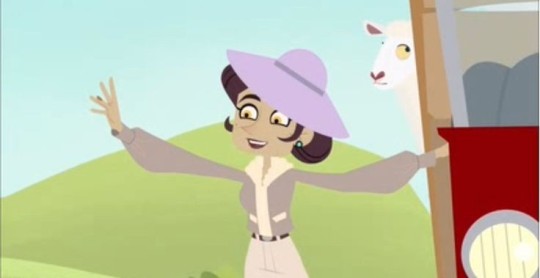
Donita Donata.
Definitivamente trabaja o trabajaba con Leoniza.
De Villavicencio.
Ella siempre y sin falta compra de los nuevos catálogos de Leoniza o cualquier otra marca de ropa bonita que salga por ahí.
Tuvo un emprendimiento de moda en su adolescencia que no le fue muy bien, pero le ayudo a centrar bases y mejorar en futuros proyectos, actualmente le va bastante bien en la industria de la moda.
Definitivamente tuvo varias polémicas, normalmente porque se filtraban videos de ella agarrándose a mechas con alguna persona o hablando vulgaridades.
Usa mucho el “Mor", “Gordis”, “Bebe", “Rey/Reina” y cualquier otra vaina cursi y rara para hablar con la gente y clientes.
Ella es gomela, creo que nadie debe explicar porque.
Gaston Gourmand (no encontré imagenes decentes de el, entonces tocó sin imagen)
Manizales o Pereira.
Cheff de calidad, te cocina cualquier comida típica de Colombia a la perfección.
Igualmente tuvo polémica cuando lo descubrieron cazando ilegalmente.
De barrio, nadie lo asalta porque nadie se atreve a asaltarlo.
Solía ser chirrete de joven, aunque aún sabe cómo meter una buena puñalada.
Por ahí dicen que tiene contactos con gente que anda metida en cosas raras.
También dicen que sabe usar armas de fuego y “meter plomo.”
Por ahí dicen que estuvo metido en una secta disque caníbal en Medellin.
Y pues esos fueron todos los headcanons, se que me faltaron algunos personajes que no los agregue debido a que no se me ocurrieron headcanons de ellos, pero si les gustaría verlos con esta temática de headcanons no duden en decírmelo y con gusto hago los headcanons ^^
#wild kratts#2d chris kratt#2d martin kratt#aviva corcovado#koki wild kratts#jimmy z#zach varmitech#donita donata#gaston gourmand#headcanon#colombia#que tierra mas bella 😍#algunos de los headcanons estan basados en mis misma o en gente que conozco#velvet's things
25 notes
·
View notes
Text
Bracket Winner: The Faves

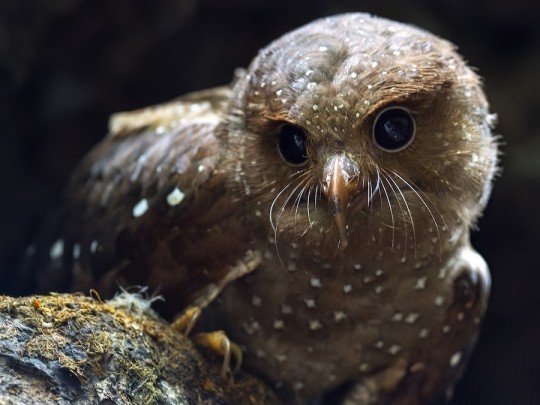
Oilbird (Steatornis caripensis)
"They are the only nocturnal, flying, fruit-eating bird in the world." (The kakapo, also nocturnal, is flightless) - Wikipedia
eBird sightings: 3,559; IUCN Redlist Rating: Least Concern
Beaten: Blakiston's Fish Owl, African Penguin, Bonin Petrel, Pygmy Nuthatch, Rook
Also known locally as the guácharo, these birds are the only extant member of their family and order. Fossils of other oilbirds have been found, but this species is the only one that has survived until the present era. They've got excellent eyesight and use it to find fruit, but oilbirds also use echolocation to help navigate. As they've been found to roost and nest in caves, this is likely the most important place for their echolocation.
These birds got their name from the fact the chicks are so heavy with fat that they made good lanterns. Most flying birds are heaviest before leaving the nest, but oilbird chicks weigh up to 21 oz, which is substantially heavier their adult weight of 12-17 oz.
Venezuela's first national monument is The Guacharo Cave, sitting as a centerpiece of its national park. According to some estimates there may be 15,000 or more birds living there.
Sources under the cut
Images: Full Body (Óscar Meneses); Portait (Andres Vasquez Noboa)
#hipster bird bracket winner#oilbird#steatornis caripensis#steatornithiformes#steatornithidae#frugivore#south american birds
27 notes
·
View notes
Text

Ferdinand Bellerman, La cueva del Guácharo, Venezuela, 1874
1 note
·
View note
Text




182) Tinamus osgoodi; kusacz czarny, black tinamou - gatunek ptaka naziemnego, występującego w wilgotnych lasach podgórskich i górskich w Andach w Ameryce Południowej.
Ten gatunek kusaczy został po raz pierwszy opisany przez Henry'ego Boardmana Conovera w 1949 roku na podstawie okazu z Cusco w Peru. Ma dwa podgatunki:
T. o. hershkovitzi - prawie całkowicie ograniczony do kolumbijskich Andów, gdzie występuje na wysokościach od 1400 do 2100 m (4600 do 6900 stóp). Znany jest z zachodniego zbocza Andów Wschodnich w departamencie Huila i San José de la Fragua na wschodnim zboczu Andów Wschodnich w departamencie Caquetá. Sprawozdania z północnych Andów Centralnych w departamencie Antioquia w Kolumbii i północno-wschodnich Andów w prowincjach Napo i Sucumbíos w Ekwadorze prawdopodobnie również obejmują ten podgatunek
T. o. osgoodi - znaleziony na wschodnim zboczu Andów Peruwiańskich w Cuzco, Puno, Madre de Dios i Huánuco. Występuje głównie na wysokościach od 900 do 1400 m (od 3000 do 4600 stóp), ale lokalnie pojawia się nawet na wysokości 2100 m (6900 stóp).
Praktycznie nic nie wiadomo o zachowaniu czarnego tinamou, ale prawdopodobnie jest ono podobne do zachowania jego krewnych. W plonie jednego okazu znaleziono orzechy. Jedyne znane gniazdo znajdowało się na ziemi i zawierało 2 błyszczące, niebieskie jaja. W Peru dorosłe osobniki w okresie rozrodczym odnotowano między marcem a listopadem, a pisklę znaleziono w lutym.
Czarny kusacz został sklasyfikowany jako narażony przez IUCN z zasięgiem występowania wynoszącym 11 600 km2 (4500 mil kwadratowych). W 2004 roku szacowano, że pozostało mniej niż 10 000 osobników. Istnieje niewiele ostatnich zapisów z Kolumbii. Dawniej był opisywany jako lokalnie pospolity w Peru, ale obecnie jest rzadki w tym kraju. Czarny kusacz został zarejestrowany w kilku rezerwatach, w szczególności w Megantoni National Sanctuary, Manú National Park i Sira Communal Reserve w Peru, Sumaco Napo-Galeras National Park w Ekwadorze i Cueva de los Guácharos National Park w Kolumbii. Czarny kusacz jest zagrożony wylesianiem lub utratą siedlisk spowodowaną ekspansją osadnictwa ludzkiego, ekspansją rolnictwa, budową dróg, eksploracją ropy naftowej w Peru i jest polowany dla pożywienia. Nawet w rezerwatach trwają polowania i dochodzi do utraty siedlisk.
0 notes
Text

Oilbirds or Guácharos (Steatornis caripensis), family Steatornithidae, order Steatornithiformes, found in locations on northern and western South America
These birds used to be included in the order Caprimulgiformes, along with the nightjars, but were separated into their own order in 2010.
They are closely related to the nightjars.
These nocturnal birds usually nest in colonies in caves.
Oilbirds feed on the fruits of oil palms and laurels.
They are able to navigate at night using echo-location.
photographs by Clemente Passariello
#oilbird#steatornis#steatornithidae#steatornithiformes#bird#ornithology#animals#nature#south america
405 notes
·
View notes
Text
Renuncia jefe de campaña de Benjamín Rausseo en Barinas: «El Conde miente»
Una nueva renuncia sacude al comando Conde. El jefe de campaña del estado Barinas, el abogado Rafael Octavio Jimenez le retiró su apoyo al actor y comediante de cara a la elección presidencial del próximo 28 de julio.
El hijo del Dr. Rafael Simón Jimenez indicó que el Conde del Guácharo «miente» y que está encabezando una campaña «mal dirigida».
«El error fue tan grande que no tenía la…

View On WordPress
0 notes
Text
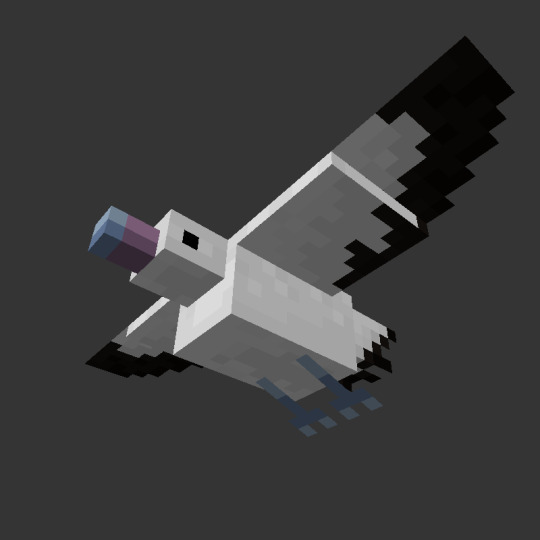
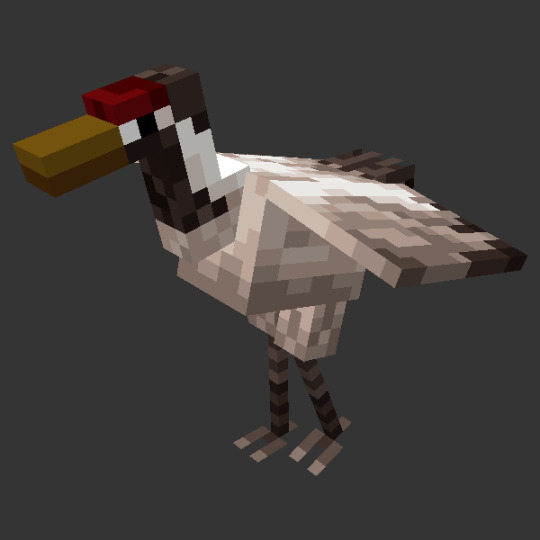
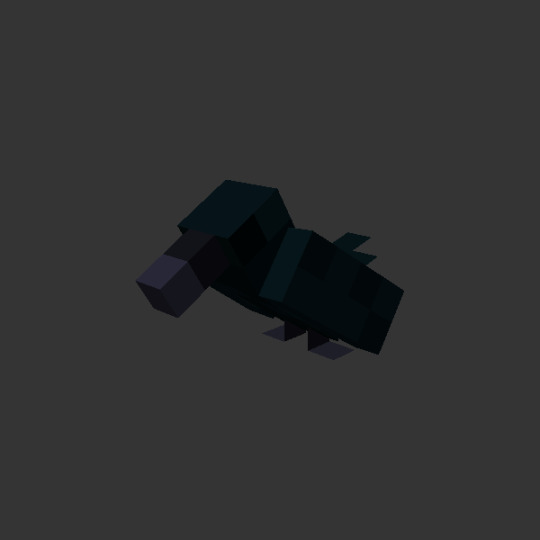


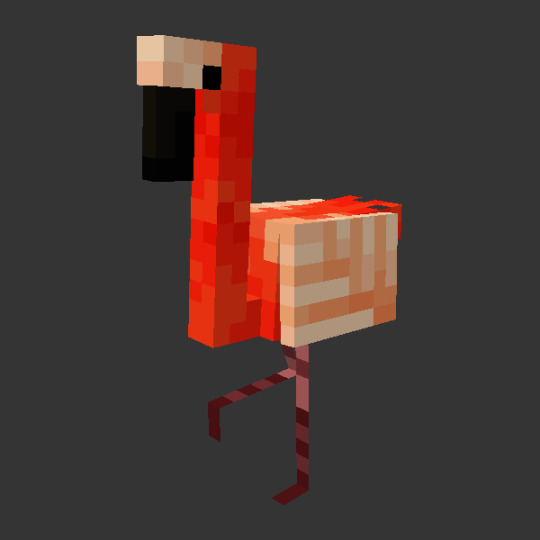
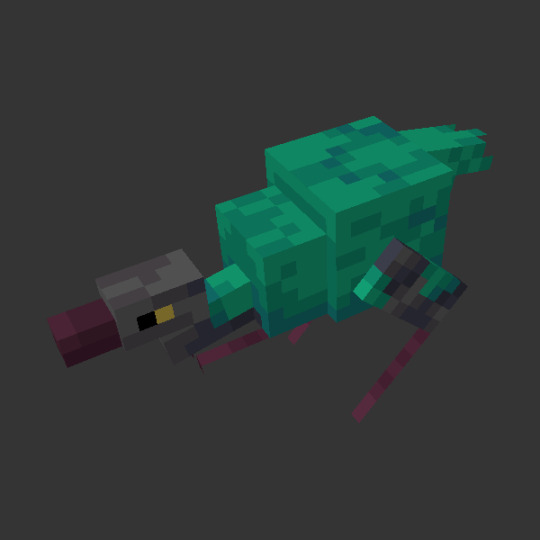

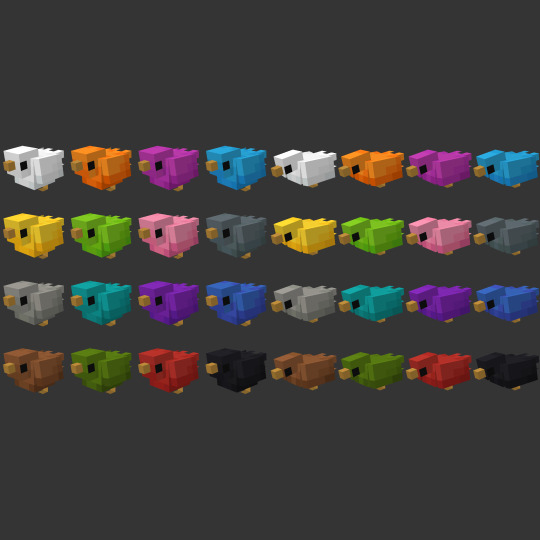
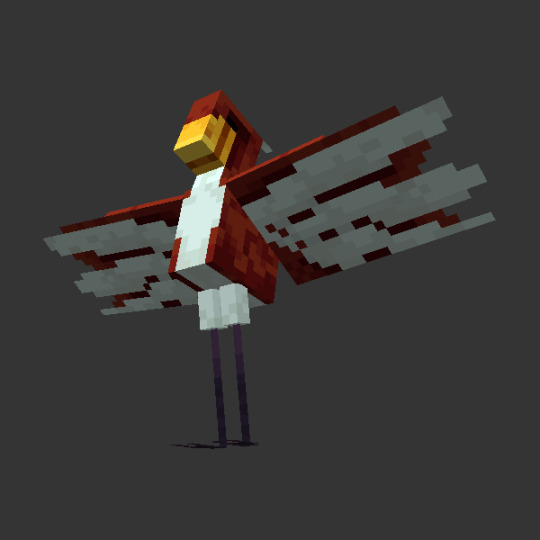


12 birds down! In order:
albatross, crane, crow
vulture, toucan, flamingo,
hoardgull, pelican, songbird,
lush caves goliathia, deep-dark bird of paradise, end potoo
These are all for my mod, Valley of Plenty! Though it's kinda an art project too, I really like modeling birds. I have a tag for the mod, everything I've posted is under that tag (on this post too!), and I'm doing an AMA right now for it, but...
346 notes
·
View notes